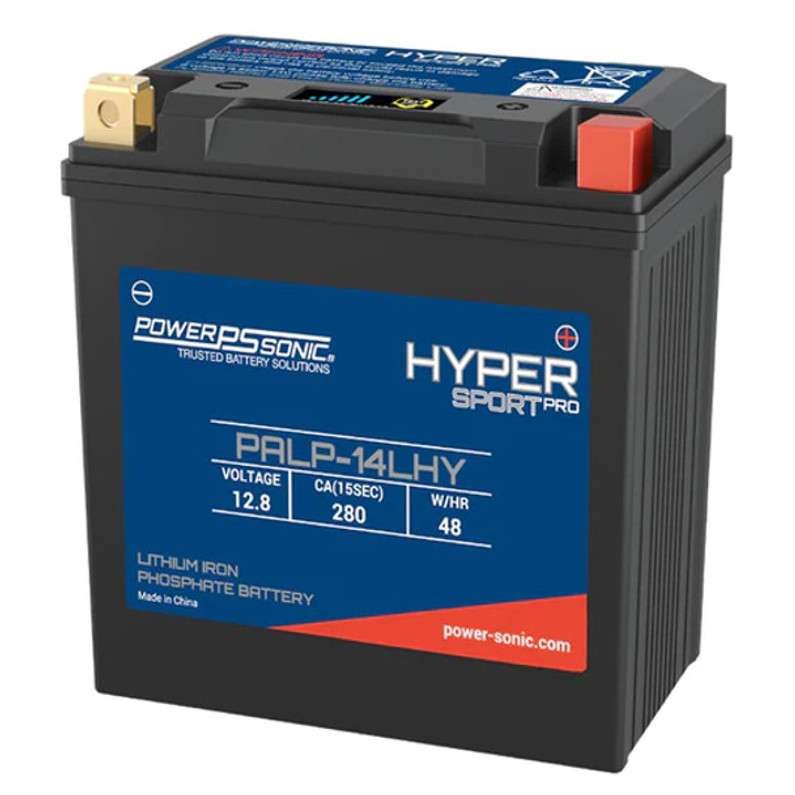Battery Types AGM
Each line of batteries has its unique features that account for differences in price and performance. We’ll take a closer look at the two basic types of batteries that manufactures. These two battery types are: Conventional and Absorbed Glass Mat, or AGM. Conventional batteries have filler caps that allow distilled water to be added to the battery periodically. AGM batteries do not have filler caps and are sometimes referred to as maintenance-free batteries or VRLA (valve regulated lead acid) batteries. In this manual, AGM will refer to all types of these non-Conventional batteries. AGM Batteries AGM batteries look different than other battery types. They are more compact because there is no free electrolyte making them more “volume efficient” in that they take up less space for their energy storing capacity. Because they are filled with electrolyte only one time during activation there are no filler caps. Instead a sealing plug permanently covers the filler ports. Also there is no vent tube. AGM batteries are ideal for long term storage on vehicles that include: riding mowers, personal watercraft, scooters and motorcycles that are not ridden in winter. In addition, an AGM battery is an excellent choice for use in vehicles where acid spills could occur (ATVs, watercraft and motorcycles).
AGM battery does not vent gasses to the atmosphere during the charge/discharge process. The construction of the AGM battery causes internal freed gas to recombine inside the battery so no vent tube is required. This technology is referred to as valve regulated lead acid (VRLA) or a sealed VRLA battery. The terms, AGM and VRLA are sometimes used interchangeably however in this manual AGM will be used. An AGM battery can be sealed because inside the battery the negative plates are never fully charged and therefore don’t produce hydrogen gas. The positive plates create oxygen during the discharge process but instead of the oxygen being forced out a vent tube, it reacts with the charged active material on the plates to become water until the battery is charged and the water is transformed into acid. This process is called reombinant technology and this design is what makes AGM batteries unique. Inside an AGM battery, the separators between the negative and positive plates are made of a special fiber that is resistant to heat and acid. This design makes the AGM battery less prone to spilling acid in that there is less liquid acid contained inside the battery. In addition, an internal safety valve is used in case of accidental overcharging. The safety valve opens if gas pressures inside the battery reach a critical point venting the gasses to the outside. The valve also includes a flame arrestor disk that minimizes the risk of explosion. Some of the benefits of an AGM battery include:
■ No topping off with water or having to check the acid level
■ Reduced self-discharge because the plate grids are manufactured from a special lead-calcium alloy that holds a charge longer than other battery types
■ Easy, instant activation using the “one-push” electrolyte acid container Most AGM batteries are available either “factory activated” or as a dry battery with an acid pack. A “factory activated” battery does not require filling before installation. An extensive activation process ensures complete absorption of the electrolyte so no liquid acid is contained within the battery. This process allows these batteries to be shipped from the factory ready to install.
Recent Posts
-
Trailer Breakaway Kit With Charger - Switch - Includes 12V 10AH SLA Battery
This trailer breakaway kit can handle 1-2-3-4 Axel trailers. This kit also has an upgraded 10A …18th Jun 2025 -
NEW! Nano-Silica Construction and Nano Silica Collodial Electrolyte Batteries!
Now in Stock! Capable of up to 350 cycles at 100% depth of discharge, Nano-Silica has superior …2nd Apr 2025 -
New Chargers now in stock! Recsue IQ6 & IQ8
Check out these new chargers from Quick Cable. 12V and 24V switchable between different AMPS. …3rd Feb 2025




